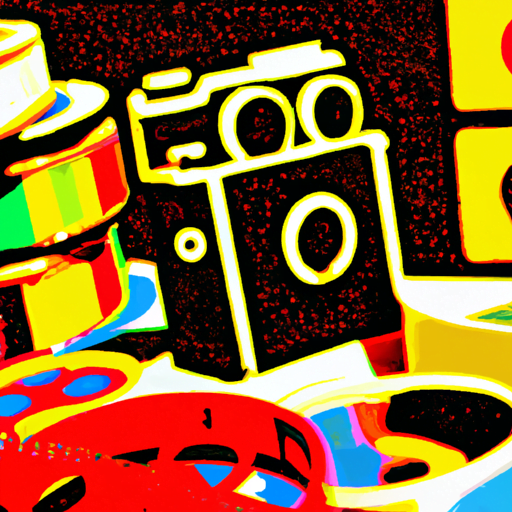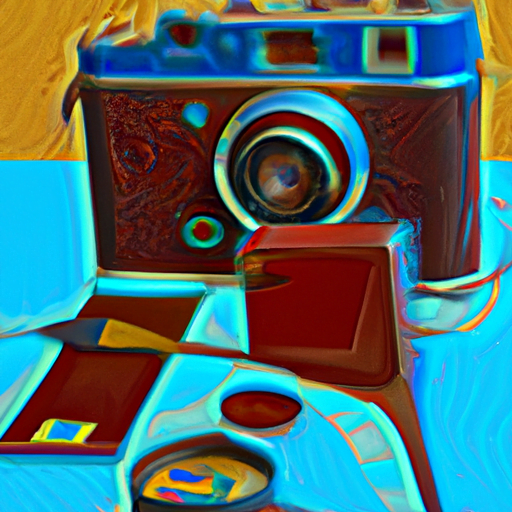
-
Table of Contents
- Innovative Techniques for Creating Digital Collages
- 1. Traditional Collage Techniques in the Digital Age
- 1.1 Paper Collage
- 1.2 Photomontage
- 2. Digital Tools and Software for Collage Creation
- 2.1 Adobe Photoshop
- 2.2 Canva
- 3. Pushing the Boundaries: Experimental Techniques
- 3.1 Generative Art
- 3.2 Augmented Reality
- 4. Case Studies: Inspiring Examples of Digital Collages
- 4.1 Case Study 1: Eugenia Loli
- 4.2 Case Study 2: Beeple
- 5. Summary
Innovative Techniques for Creating Digital Collages

Collages have long been a popular form of artistic expression, allowing artists to combine various elements to create visually stunning compositions. With the advent of digital technology, the art of collage has evolved, opening up new possibilities for creativity and experimentation. In this article, we will explore innovative techniques for creating digital collages, from traditional methods adapted for the digital realm to cutting-edge tools and software that push the boundaries of what is possible.
1. Traditional Collage Techniques in the Digital Age
Before delving into the world of digital collages, it is essential to understand the traditional techniques that form the foundation of this art form. These techniques can be adapted and enhanced using digital tools to create unique and captivating compositions.
1.1 Paper Collage
Paper collage involves cutting and pasting various materials, such as photographs, magazine clippings, and textured papers, onto a surface to create a cohesive composition. In the digital realm, this technique can be replicated using image editing software.
One example of a digital paper collage technique is to scan or photograph physical materials and import them into an image editing program. These materials can then be manipulated, resized, and layered to create a digital collage. This approach allows artists to combine the tactile qualities of physical materials with the flexibility and versatility of digital tools.
1.2 Photomontage
Photomontage involves combining multiple photographs to create a new image. This technique has been widely used by artists throughout history, from the Dadaists of the early 20th century to contemporary digital artists.
In the digital age, photomontage has become even more accessible and versatile. With the abundance of high-quality stock photos and the power of image editing software, artists can seamlessly blend multiple images to create surreal and thought-provoking compositions. The ability to manipulate and transform photographs digitally opens up endless possibilities for experimentation and creativity.
2. Digital Tools and Software for Collage Creation
While traditional techniques can be adapted for the digital realm, there are also a plethora of specialized tools and software designed specifically for creating digital collages. These tools offer unique features and functionalities that can enhance the creative process and push the boundaries of what is possible.
2.1 Adobe Photoshop
Adobe Photoshop is the industry standard for image editing and manipulation. It offers a wide range of tools and features that are invaluable for creating digital collages.
One of the key features of Photoshop is its layering system, which allows artists to stack and arrange elements in a composition. Each layer can be individually edited, resized, and transformed, providing complete control over the collage’s visual elements.
Photoshop also offers advanced selection tools, such as the Magic Wand and Quick Selection tools, which make it easier to isolate and extract elements from photographs. This feature is particularly useful for creating photomontages.
2.2 Canva
Canva is a web-based design tool that offers a user-friendly interface and a wide range of templates and design elements. While Canva is not specifically designed for collage creation, it can be a valuable tool for artists looking to create digital collages quickly and easily.
Canva’s drag-and-drop interface allows users to easily import and arrange images, text, and other design elements. The platform also offers a library of stock photos and illustrations, making it a convenient resource for artists who do not have access to their own image libraries.
3. Pushing the Boundaries: Experimental Techniques
While traditional techniques and digital tools provide a solid foundation for creating digital collages, some artists are pushing the boundaries of what is possible by experimenting with innovative techniques and approaches.
3.1 Generative Art
Generative art involves using algorithms and computer code to create artwork. This approach allows artists to create dynamic and ever-evolving collages that respond to various inputs or parameters.
One example of generative art in collage creation is the use of code to randomly generate and arrange elements within a composition. This technique can result in unexpected and visually striking combinations that would be difficult to achieve manually.
3.2 Augmented Reality
Augmented reality (AR) is a technology that overlays digital content onto the real world. Artists are exploring the potential of AR to create interactive and immersive digital collages.
Using AR tools and software, artists can create collages that come to life when viewed through a smartphone or tablet. Viewers can interact with the collage by moving their device, triggering animations, sounds, or additional visual elements.
4. Case Studies: Inspiring Examples of Digital Collages
Examining real-world examples can provide valuable insights and inspiration for creating digital collages. Let’s explore two case studies that showcase the innovative techniques discussed in this article.
4.1 Case Study 1: Eugenia Loli
Eugenia Loli is a digital artist known for her surreal and dreamlike collages. She combines vintage photographs, illustrations, and textures to create visually stunning compositions that evoke a sense of nostalgia and otherworldliness.
Loli’s work often incorporates traditional collage techniques, such as layering and photomontage, but she also embraces digital tools and software to enhance her creative process. Her collages seamlessly blend elements from different eras and contexts, creating a unique visual language.
4.2 Case Study 2: Beeple
Beeple, also known as Mike Winkelmann, is a digital artist who has gained widespread recognition for his daily art project. For over a decade, Beeple has created and shared a new digital artwork every day, often incorporating collage elements.
Beeple’s collages often feature a mix of futuristic and dystopian imagery, combining photographs, 3D renders, and digital illustrations. His work pushes the boundaries of what is possible with digital collage, showcasing the potential for creating visually stunning and thought-provoking compositions.
5. Summary
Digital collages offer artists a world of possibilities for creative expression. By adapting traditional techniques, exploring specialized tools and software, and experimenting with innovative approaches, artists can create visually stunning and thought-provoking compositions.
Whether using Adobe Photoshop to manipulate and layer elements, Canva for quick and easy collage creation, or pushing the boundaries with generative art and augmented reality, the digital realm provides endless opportunities for artists to explore and push the boundaries of what is possible.
By studying inspiring case studies, such as Eugenia Loli and Beeple, artists can gain valuable insights and inspiration for their own digital collage creations. The key is to embrace experimentation, combine different techniques and tools, and let creativity guide the way.
